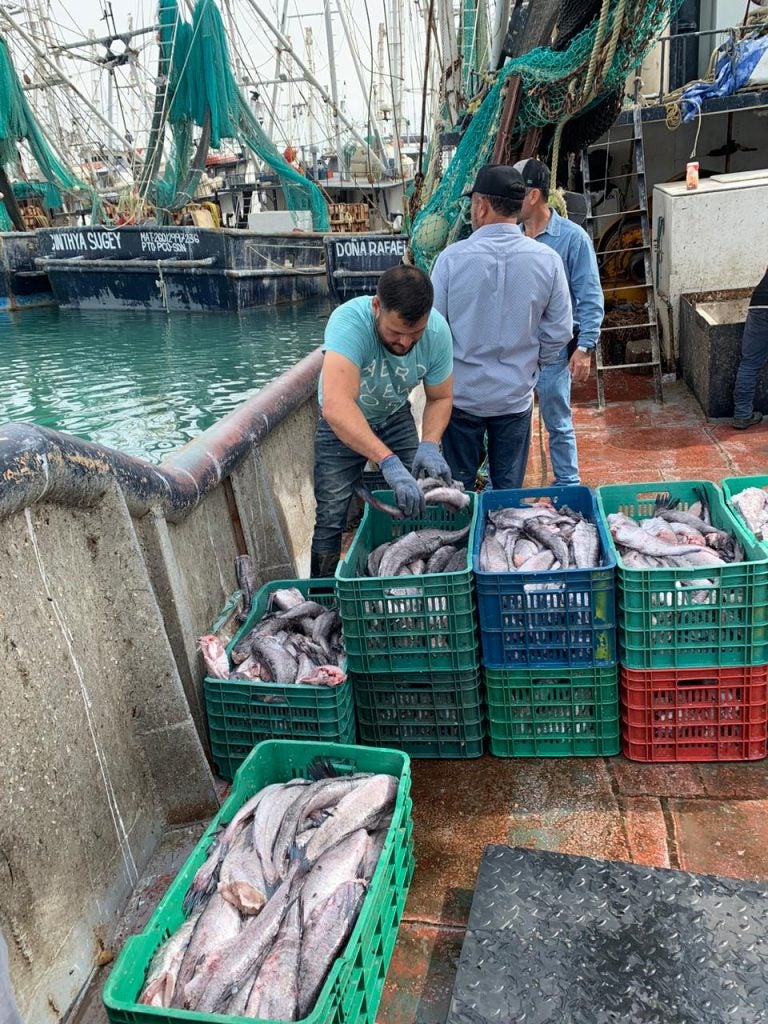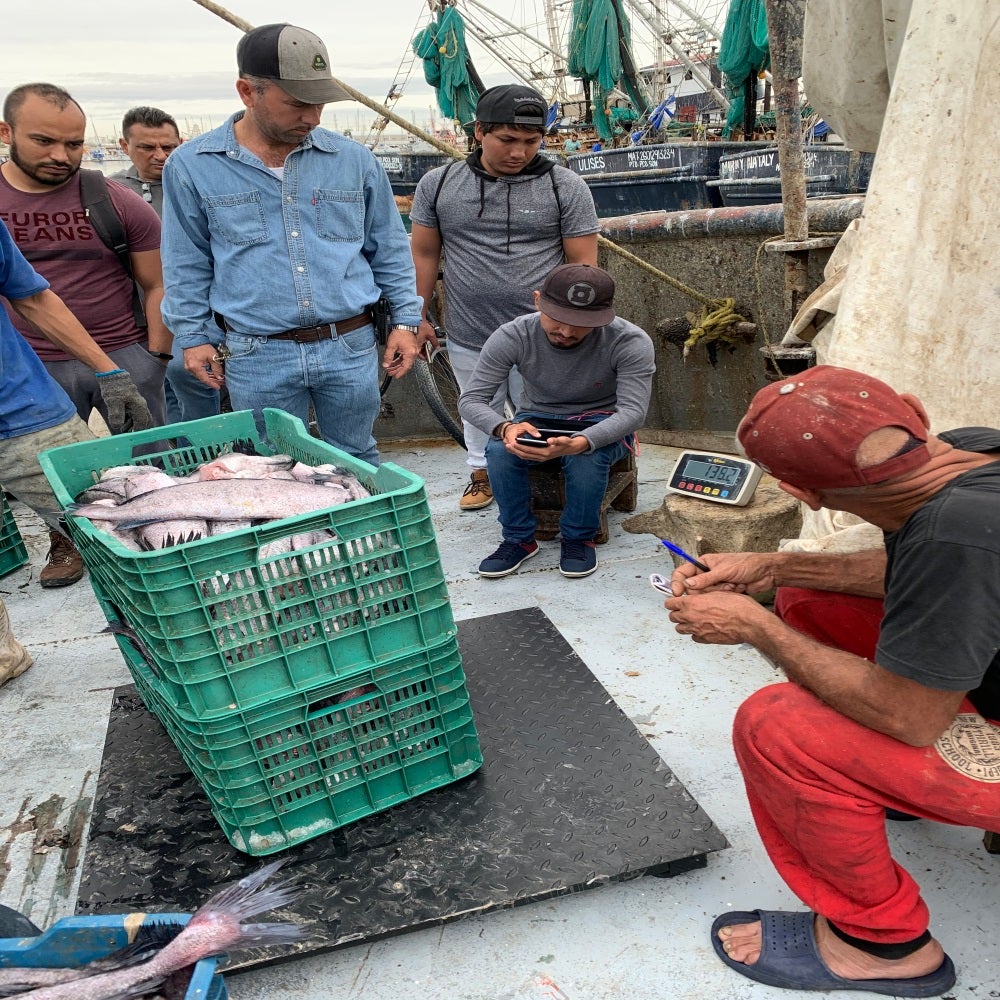 By Berenice García and Rafael Ortiz
By Berenice García and Rafael Ortiz
Digital technology can be a powerful ally to sustainable fishing. Diverse experiences around the world have shown it can improve fisheries management — sustainably and cost-effectively.
In the Mexican fishing sector, these technologies are still in a developmental and exploratory stage, yet the experience for Mexican hake producers in the Gulf of California is already showing promising results for both fishers and the environment.
Gulf of California hake: taking management innovation to the next stage
Hake — or merluza as it is called in Spanish — is a relatively new fishery. In 2012, a group of hake producers approached EDF to make this fishery sustainable and profitable. Over the past eight years, we have been working with hake producers, Mexican fishing authorities, buyers and scientists to secure the fishery in the long run, by improving fishing practices and regulations.
The more we join efforts, knowledge and tools … the better solutions we can achieve for the hake fishery, and potentially for other Mexican fisheries.
Since then, we have been able to include the hake fishery under Mexico’s National Fisheries Chart. We also initiated a Fishery Improvement Project to enhance the fishery’s recognition as sustainable, and more recently, participated in the development of a management plan (currently under discussion) that includes an exclusive and secure fishing rights approach.
Today, hake is the second most important industrial fishery in the Upper Gulf of California. However, hake producers know there is still room for improvement and innovation. That’s why in February 2020, hake producers from Sonora joined EDF’s Smart Boat Initiative: a project to enhance the uptake of modern technologies in fisheries, and carried out through pilots located around the world, in the U.S., Mexico and Asia.
This Gulf of California pilot was created to gain more information about the fishery’s operation, hoping to make it more efficient, improve its traceability and demonstrate that it operates under transparency, compliance and sustainability standards. All this information helps producers prove they are complying with sustainable practices — a requirement essential for accessing more markets in the United States and Europe.
Digital tools: making a difference for the hake fishery

The hake Smart Boat pilot was designed to solve the fishery’s specific needs — to have more information on its operations and catches, make its reporting processes more efficient and aligned with fishing regulations, and increase transparency.
To meet these needs, the hake Smart Boat pilot tested three digital tools: an electronic log, an automated scale and a camera and tracking system.
- The electronic log helps record data on catches, bycatch and fishing effort, aligned with Mexican fishing regulations criteria. Unlike the traditional log — which needs to be filled in by hand and on paper — the electronic log allows data to be recorded, stored and sent directly through a mobile device to fishing authorities and managers.
- The automated scale allows the transmission of weight information directly to a tablet or cellphone, making it a faster and more accurate way to have information ready to use on the official landing slip.
- The camera and tracking system records everything that happens on deck, complementing the Observers Program’s data and providing information on the vessel’s fishing route, which can help boat captains make more efficient trips in the future.
Although interrupted due to the COVID-19 pandemic, this pilot showed interesting results.
Technology implementation has its benefits
Collaboration is key to successfully developing and implementing technological pilots.
Technological and digital tools allow hake fishers and fishworkers to gather a large amount of information in real-time, reduce errors in data transcription, and obtain evidence for better management and market solutions. And having accurate and timely information helps both fishers and managers: it helps fishers have more efficient production, while making it easier for fishing authorities and managers to follow enforcement and compliance. Simultaneously, the data gathered is essential for researchers and fisheries experts to develop scientific information on the hake species and its ecosystemic relations and impacts. These technologies clearly have many benefits.
And the opportunities for learning and improvement haven’t stopped there. These tools are now being tested in the Gulf of California shrimp fishery after one of the hake producers wanted to explore these technologies with a different species — showing just how far-reaching these tools can be.
Collaboration — a key component of the Smart Boat Initiative
One of the most significant takeaways from this Gulf of California pilot is that collaboration is key to successfully developing and implementing technological pilots. The more we join efforts, knowledge and tools among fishers, governmental authorities, scientists and technology developers, the better solutions we can achieve for the hake fishery, and potentially for other Mexican fisheries.
That’s why in 2021, EDF is aiming to expand the pilot to a larger number of vessels and to more people interested in the development of technological solutions for sustainable fishing in the Gulf of California. If you are a producer or boat owner, developer, scientist or investor interested in supporting Mexico’s fishing sector and digital solutions, please contact us and join us — to transform Mexican fisheries for a sustainable, resilient future.









